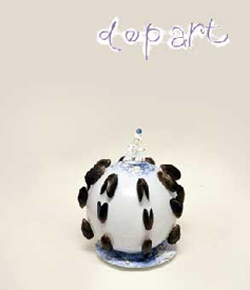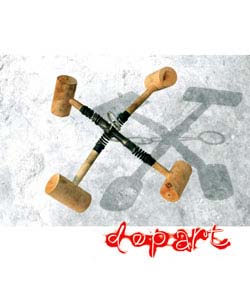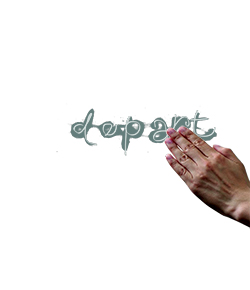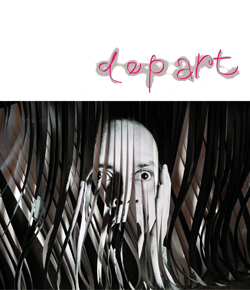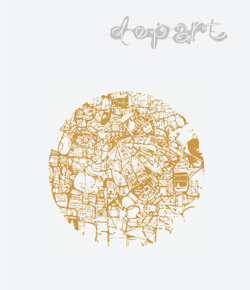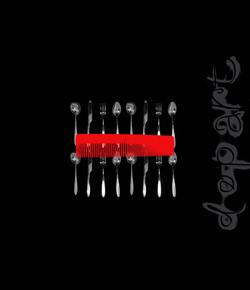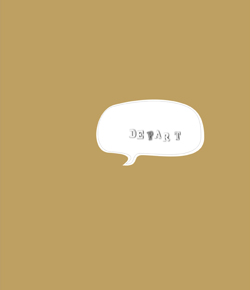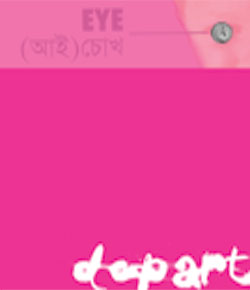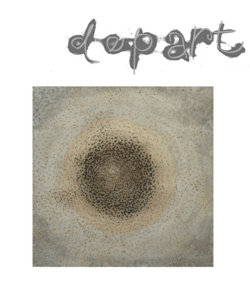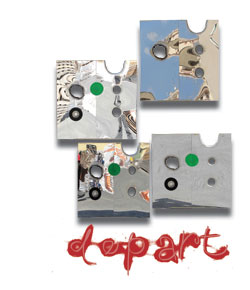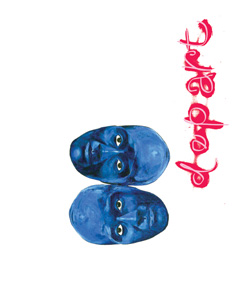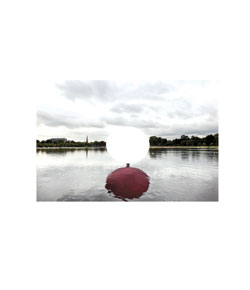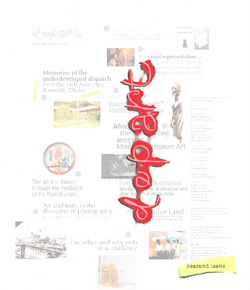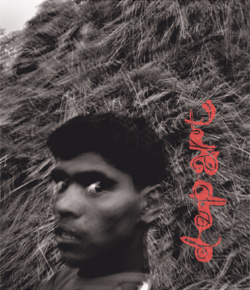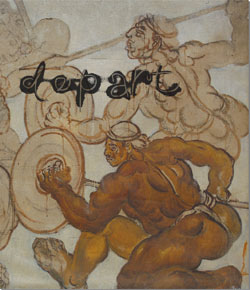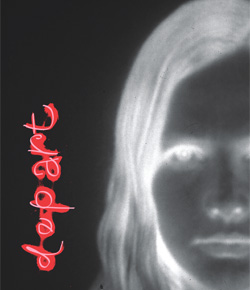navigator
The 'plural' art practices of contemporary Santiniketan

There has always been a kind of healthy 'tug and pull' relationship between the students and teachers at Kala Bhavana, Santiniketan, and at the Faculty of Fine Arts, M S University of Baroda. With its establishment in post-Independence India, the Faculty of Fine Arts could be deemed as the youngest art school of its generation, notwithstanding the recent ones established by academic institutions in the private sector. On the other hand, Kala Bhavana, established by the venerable artist-poet Rabindranath Tagore almost four decades earlier, focused on the local understanding of existing art and craft traditions, while offering an embrace to far-Eastern and South Asian art traditions as well.
While many of the 'founding' teachers at the Faculty in Baroda were Santiniketan alumni (Professor Sankho Chaudhuri, Professor K G Subramanyan), they introduced some of the good art practices established and proven at Santiniketan, blending these seamlessly with others that they were exposed to in their stints at art schools they had attended in the UK and Europe, and their own understanding of the challenges faced by young Indian artists. The Faculty at Baroda therefore became known for encouraging experimentation, new ideas, innovation with materials, and as a result was (and continues to be) a beacon for many young art students who may have studied for their under-graduation in art schools closer to their homes but opt to study post graduate courses in Baroda, before hopefully a second post-graduation in the UK, Europe or the USA, and then to return home to a career as a full-time practising artist or shared one as artist-teacher.

It is therefore perfectly understandable that out of the 26 artists whom curator Ushmita Sahu chose for her exhibition Poetics of Plurality held at the SITE Art Space gallery in Baroda February through March 2016, 11 had studied both at Santiniketan and at Baroda (Shakuntala Kulkarni, Jayashree Chakravarty, Archana Hande, Indrapramit Roy, T V Santhosh, Farhad Hussain, Prasanta Sahu, Moutushi Chakraborty, Anupam Chakrabarty, Birendra Pani, Sharmi Chowdhury). A number of them travelled to the city for the exhibition opening, something that speaks well and deeply of their attachment to their two alma maters and to the city of Baroda.


The artists for this exhibition have been chosen from amongst those who studied at Santiniketan between the 1980s and 2015 and who have been able to make their presence felt on the national, if not the international, art scene. The very young ones, who graduated after 2011, were the ones who the curator saw as those with unusual promise. The exhibition was an effort to challenge the popular notion that Santiniketan trained artists produce only romanticized modernist art, whereas, in reality, the rich plurality of expression in the works of several Indian contemporary artists who are alumni of Kala Bhavana, have greatly enriched the Indian art world. In addition to the 11 Santiniketan-Baroda trained artists already listed, the exhibition also included works of others such as Ashim Purkayasta, Surekha, Mithu Sen, Anirban Mitra, Tanmoy Samanta, Paula Sengupta who are amongst the top-notch artists in the country today. While the exhibition presented paintings, prints, video and performance art, sculpture and installation could not be included for reasons of logistics. Hopefully a show exclusively focussed on these two mediums will perhaps be held later this year. In spite of this Poetics of Plurality truly gave an idea of the varied range of art created and shifts in trajectories that the Kala Bhavana, Santiniketan continues to support year after year.

In more ways than one, this was a milestone exhibition. An art exhibition that worked around the contribution of an art school towards the creation of national art capital and displayed in another city with an art school of its own, is a wonderful way in which artistic trends and contributions can be shared and a dialogue begun. An interesting film on Kala Bhavana played on loop in an open corridor, introduced Santiniketan to a number of young art students from non-Bengal backgrounds in Baroda. Ushmita Sahu left no stone unturned in her research and selection of artists who would respond to her curatorial brief. Of course, there would always be a couple of artists who should have made the grade but for some reason have not been able to participate. But that is to be expected and excused. Ushmita's catalogue essay (available as e-catalogue, http://issuu.com/ rajarshidutta4/docs/poetics/1) is also a well-articulated and clearly thought-out document that contextualizes her argument in terms of art historical, institutional pedagogic, and humanistic influences on the art practice at Kala Bhavana. She conclusively observes, 'Having spoken with the participating artists about their experiences as students, present day faculty or even as visitors who occasionally return to the folds of the alma mater, it becomes clear that different pedagogic iterations fostering a broad-based system that tapped into the best features of Tagore's vision, has worked over the years to challenge the monoculturalism that art and design education can, at times, endorse. Santiniketan's learning experience outside the classroom, the informal discussion with the teachers and peers, inter-departmental porosity, proximity to nature, and exposure to a practice of community-based art festivals, rituals and an inclusive art practice where music, theatre, poetry, public art and sculpture is an extension of engagement with a humanistic system is what most remember as important lessons learned.”
These lessons were generously reflected in the works of almost all participating artists, no matter where they studied after having left Santiniketan or where they are located at the moment, and what their current art practice may be engaged with, in terms of content, material or form. The works are also reflective of the variety of art practices encouraged at Santiniketan from the late 1980's onwards – abstract, narrative, video, still photography, site-specific, installation, performance, digital, animation, tapestry and textile, paper pulp. They touch upon equally varied tropes and visual figures of speech to explore contents that range across community engagement, social commentary, environmental exploitation, memories – both emotional and historical, stories and fables related to identity and migration, feminist discourse, post-colonialism, urbanization and its impact. It proved that artists from Kala Bhavana continue to command respect and form one of the large groups that influence and hold their own as thinking contemporary artists of India.
‘Poetics of Pluralism', SITE Art Space, Baroda, Feb 22- March 10, 2016. Curated by Ushmita Sahu. Participating artists: Akhiljith Krishnan, Archana Hande, Anupam Chakravarty, Amritah Sen, Arpan Mukherjee, Anirban Mitra, Ashim Purkayasta, Asis Mahakhud, Birendra Pani, Chattrapati Dutta, Farhad Hussain, Indrapramit Roy, Jayashree Chakravarty, Mithu Sen, Moutushi Chakraborty, Mahjabin Majumdar, Murali Cheeroth, Priya Ravish Mehra, Paula Sengupta, Prasanta Sahu, Shakuntala Kulkarni, Sanchayan Ghosh, Sharmi Chowdhury, Surekha, T V Santosh, Tanmoy Samanta.
SANDHYA BORDEWEKAR is an art writer and curator based in Baroda (Vadodara), India. She writes for several magazines and has curated shows in India and UK.




